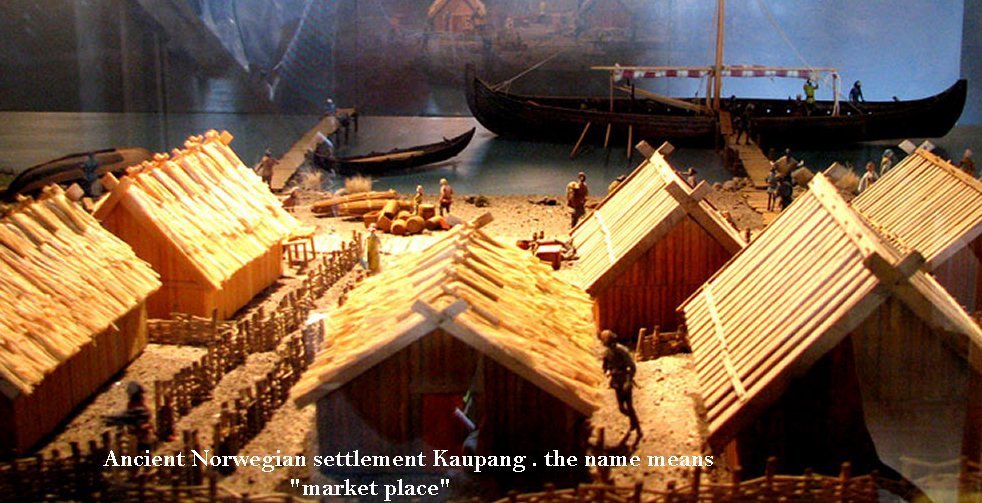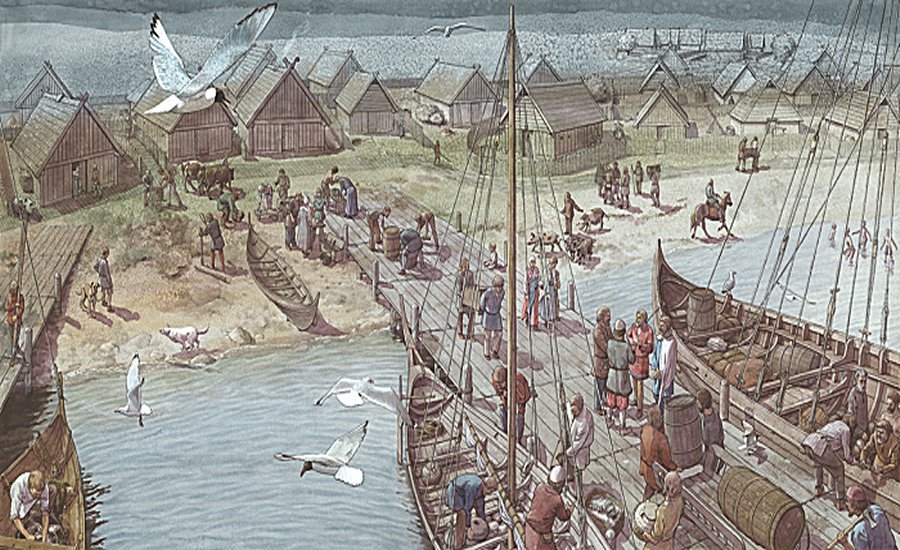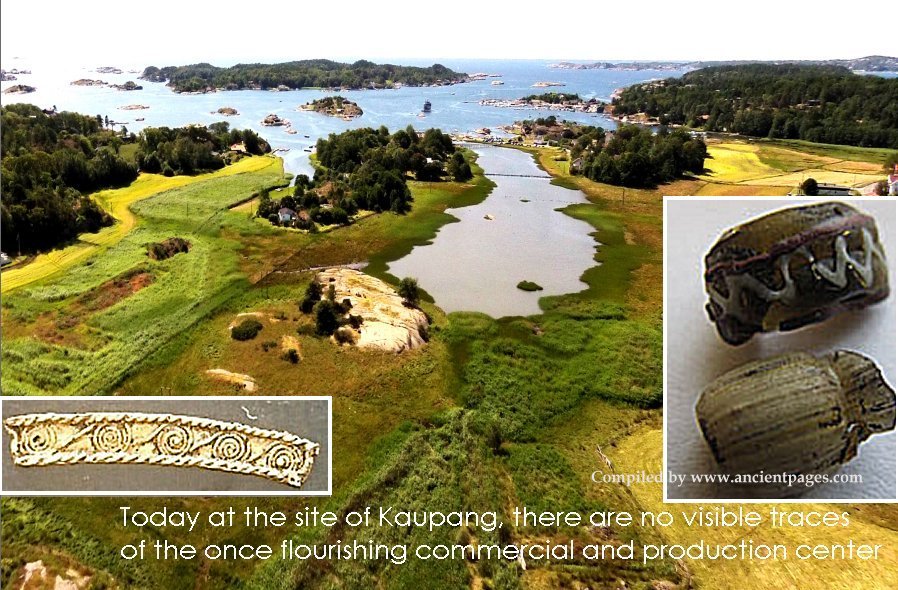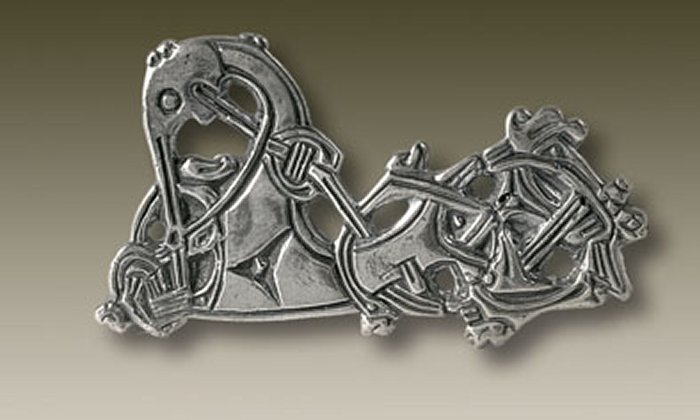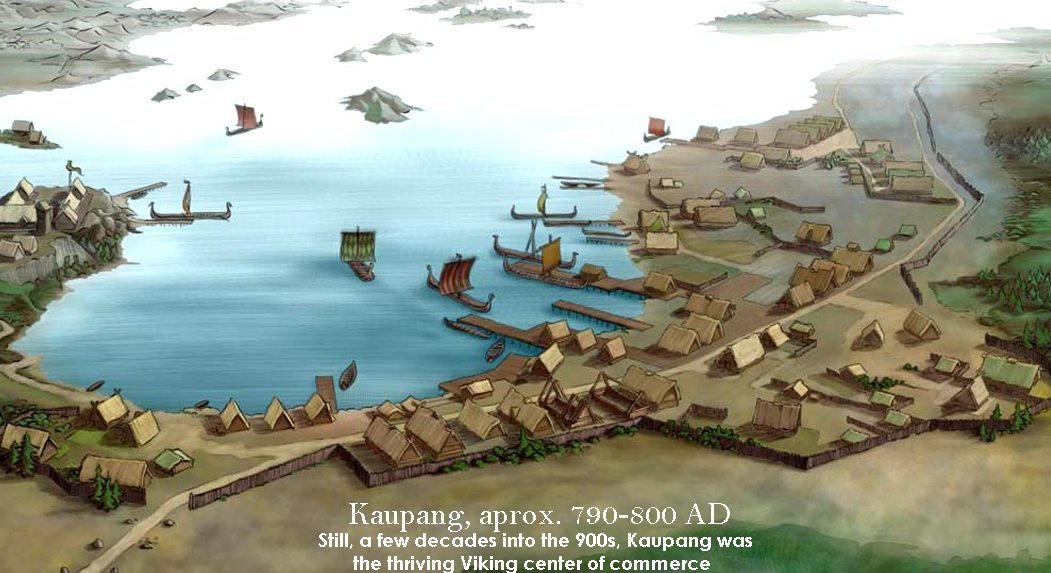Kaupang – Flourishing Viking Town – A Commercial Hub And Transit Port For North Sea Trade
A. Sutherland - AncientPages.com - Founded in the 780s, Kaupang (in Old Norse' kaupangr', 'market' or 'trading place) was Norway's important commercial and production city for Vikings and others.
Kaupang is located in Skiringssal (now known as Huseby), not far from Larvik, in county Vestfold at the mouth of the Oslofjord, in the south of Norway. Vestfold( means "West of the Fold") and Fold is the ancient name of the Oslofjord.
Kaupang Viking village – model. Image credit: vikingbyen.org
This particular region of Norway is known for its impressive archaeological sites like Oseberg, Gokstad, and Borre, all associated with the Viking period. Oseberg Ship -discovered at Oseberg, Norway, in 1904 by Knut Rom, a local farmer - is an extraordinary discovery.
Kaupang is mentioned in the Ynglinga saga (1225) by Snorri Sturluson and other early medieval sources that indicate that the area was an essential royal seat in the 8th and 9th centuries. The center - probably a seasonal but important market - flourished during the more significant part of the 9th century. It was a place of trade and cultural contact with foreigners and traders from all over Norway who came to buy and sell.
Although it was not as effective as its two Nordic "sister cities," Birka in Sweden and Hedeby in southern Jutland (now Schleswig, Germany), Kaupang was a well-known and highly effective hub for trade and production, a few decades into the 900s.
Archaeological Finds From Kaupang
"In the 8th century, there was only one town in Norway that could, with some right, be called a city. It was on a beach by the Viksfjorden in Larvik municipality in Vestfold, where the farm Kaupang is today.
Credits: Flemming Bau, 2004 - Historisk Museum
It was founded at the same time as the first Viking attacks on the British Isles and the continent. In its day, the place was probably called the shopping center in Skiringssal. In this tiny town, there were perhaps 400-600 souls, and their urban life in Norway got its early start some 1,200 years ago..." 1
As we see, at that time, not many people inhabited Kaupang, considered the first Norwegian city that functioned as a trade hub, transit port, and prosperous production center, where craftsmen produced large quantities of pins, bracelets, and harnesses for horses, both for wealthy customers and ordinary “folk flest” (the masses). They manufactured and traded goods of domestic and foreign goods.
Excavations carried out by a Norwegian archaeologist, Charlotte Blindheim (1917 - 2005), uncovered a wealthy graveyard, a complex of houses and workshops for metalworking with iron, bronze, and silver, where skilled artisans and smiths produced exquisite pieces of jewelry, ornaments and other metal goods of high quality.
Viking jewelry was beautiful and made by skilled craftsmen. A large-scale jewelry production in the Viking town of Kaupang developed about 1,150 years ago.
Weaving weights and spinning wheels were found at Kaupang's other workshops, indicating an extensive production of thread and textiles.
Artifacts (until today, about 100,000 finds) also include weapons from France, small pieces of amber from Birka and the Baltic Sea coast with cut marks, half-finished amber beads, and colorful glass beads from the Middle East and the Mediterranean, as well as Frankish beakers of glass and ceramic tubs from the Rhine districts of Germany.
Later excavations at the Kaupang site also revealed many Russian, Frankish, and Arabic (Cufic) silver coins and one bronze coin of great value, dating to the Roman period.
However, the production of vessels made of soapstone was the central part of Kaupang's export to Jutland and Hedeby.
This Oseberg-style brooch, dates to circa 900AD and related to finds revealed in the excavations at Kaupang. Image credit: Kulturhistorisk Museum/University of Oslo
Why Was Kaupang Trade Center Abandoned So Quickly?
In the late 9th century, the activity at Kaupang ceased rather quickly. The last funerals took place at Kaupang, and according to ancient sources, the site was abandoned for unknown reasons and changed into a ghost town in the early 10th century.
Towards the end of the Middle Ages, most of Kaupang's area was turned into cultivated land.
Several reasons have been suggested to explain Kaupang's decline. According to one theory, Kaupang was located in Vestfold County under Danish rule at that time. The establishment of Kaupang would have resulted from a Danish initiative around the year 800.
There are indications that the Danish hegemony weakened during the first half of the 10th century, and as a result, Kaupang began to decline gradually.
Later, when the Danish dominance under King Harald Bluetooth again gained ground there, the Danes probably wanted to establish another or several trade centers. Still, this time, they decided to choose other geographical locations and not Kaupang.
Updated on October 16, 2023
Written by A. Sutherland – AncientPages.com Staff Writer
Copyright © AncientPages.com. All rights reserved. This material may not be published, broadcast, rewritten or redistributed in whole or part without the express written permission of AncientPages.com
Expand for referencesHansen G. Everyday Products in the Middle Ages
Herbert Jankuhn., Trade and Settlement in Central and Northern Europe up to and during the Viking Period
T Douglas Price, An Archaeological History from the First Humans to the Vikings
More From Ancient Pages
-
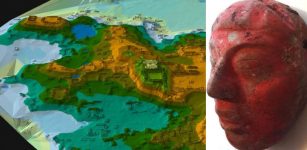 Ancient Tomb Of Maya Ruler Te’ Chan Ahk Discovered In Guatemala
News | Sep 14, 2017
Ancient Tomb Of Maya Ruler Te’ Chan Ahk Discovered In Guatemala
News | Sep 14, 2017 -
 Roman Forum (‘Forum Romanum’) – The Heart Of Ancient Rome
Featured Stories | Aug 5, 2019
Roman Forum (‘Forum Romanum’) – The Heart Of Ancient Rome
Featured Stories | Aug 5, 2019 -
 Why Is La Ferrassie Man A Unique And Famous Neanderthal?
Featured Stories | Oct 30, 2023
Why Is La Ferrassie Man A Unique And Famous Neanderthal?
Featured Stories | Oct 30, 2023 -
 Ponce De Leon’s Quest For The Fountain Of Youth In Florida
Featured Stories | Jun 12, 2019
Ponce De Leon’s Quest For The Fountain Of Youth In Florida
Featured Stories | Jun 12, 2019 -
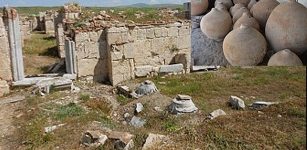 Byzantine Granary With 11 Pithoi Found In Byzantine City Of Amorium In Central Turkey
Archaeology | Aug 5, 2020
Byzantine Granary With 11 Pithoi Found In Byzantine City Of Amorium In Central Turkey
Archaeology | Aug 5, 2020 -
 On This Day In History: Aztec Calendar Stone Rediscovered – On Dec 17, 1790
News | Dec 17, 2016
On This Day In History: Aztec Calendar Stone Rediscovered – On Dec 17, 1790
News | Dec 17, 2016 -
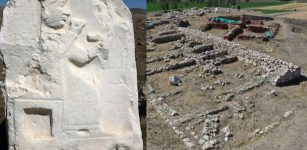 Ancient Hittite Temple Dedicated To The Goddess Of Night To Be Unearthed
Archaeology | Oct 2, 2021
Ancient Hittite Temple Dedicated To The Goddess Of Night To Be Unearthed
Archaeology | Oct 2, 2021 -
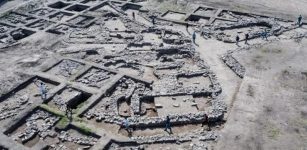 Incredible 5,000-Year-Old New-York-Like Metropolis Discovered In Israel
Archaeology | Oct 9, 2019
Incredible 5,000-Year-Old New-York-Like Metropolis Discovered In Israel
Archaeology | Oct 9, 2019 -
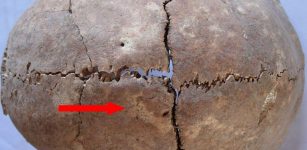 Physical Violence In Ancient Mesopotamia Much Less Common Than Ancient Texts Suggest – New Study
Archaeology | Mar 29, 2017
Physical Violence In Ancient Mesopotamia Much Less Common Than Ancient Texts Suggest – New Study
Archaeology | Mar 29, 2017 -
 Mysterious Death Of Cambyses II – Natural, Suicide Or Assassination By Darius I The Great?
Featured Stories | Apr 21, 2021
Mysterious Death Of Cambyses II – Natural, Suicide Or Assassination By Darius I The Great?
Featured Stories | Apr 21, 2021 -
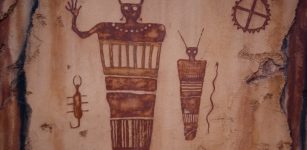 Mysterious 8,000-Year-Old Petroglyphs Of Unknown Beings Of Sego Canyon, Utah
Featured Stories | Sep 26, 2020
Mysterious 8,000-Year-Old Petroglyphs Of Unknown Beings Of Sego Canyon, Utah
Featured Stories | Sep 26, 2020 -
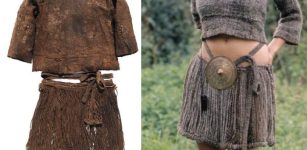 Egtved Girl’s Unique 3,400-Year-Old Style Of Dress
Featured Stories | Nov 17, 2023
Egtved Girl’s Unique 3,400-Year-Old Style Of Dress
Featured Stories | Nov 17, 2023 -
 Astrape And Bronte – Twin Goddesses Of Lightning And Thunder Carried God Zeus’ Thunderbolts
Featured Stories | Jan 22, 2019
Astrape And Bronte – Twin Goddesses Of Lightning And Thunder Carried God Zeus’ Thunderbolts
Featured Stories | Jan 22, 2019 -
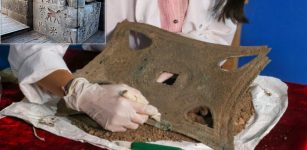 Ornamental Bronze Wall Plate Unearthed In Ayanis Castle Built By Urartian King Rusa II
Archaeology | Sep 13, 2022
Ornamental Bronze Wall Plate Unearthed In Ayanis Castle Built By Urartian King Rusa II
Archaeology | Sep 13, 2022 -
 Magnificent Meteora And ‘Suspended In The Air’ Greek Monasteries
Featured Stories | May 5, 2021
Magnificent Meteora And ‘Suspended In The Air’ Greek Monasteries
Featured Stories | May 5, 2021 -
 Mystery Of The Haraldskærkvinnan (Haraldskærwoman) – Bog Body Of A Viking Queen?
Featured Stories | Apr 8, 2024
Mystery Of The Haraldskærkvinnan (Haraldskærwoman) – Bog Body Of A Viking Queen?
Featured Stories | Apr 8, 2024 -
 Major Earthquake Struck The Atacama Desert 3,800 Years Ago, Forcing Hunter-Gatherers To Move Inland
Archaeology | Apr 7, 2022
Major Earthquake Struck The Atacama Desert 3,800 Years Ago, Forcing Hunter-Gatherers To Move Inland
Archaeology | Apr 7, 2022 -
 DNA Of 10,000-Year-Old Luzio Solves The Mysterious Disappearance Of The Sambaqui Builders
Archaeology | Jul 31, 2023
DNA Of 10,000-Year-Old Luzio Solves The Mysterious Disappearance Of The Sambaqui Builders
Archaeology | Jul 31, 2023 -
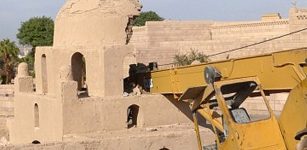 Unique Ancient Turtle-Shaped Tomb Discovered In North China
Archaeology | Oct 5, 2015
Unique Ancient Turtle-Shaped Tomb Discovered In North China
Archaeology | Oct 5, 2015 -
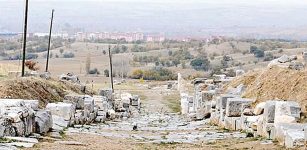 Ancient Pisidia Antiocheia – Excavations In An Important Center Of Early Christianity
Civilizations | Sep 27, 2015
Ancient Pisidia Antiocheia – Excavations In An Important Center Of Early Christianity
Civilizations | Sep 27, 2015

